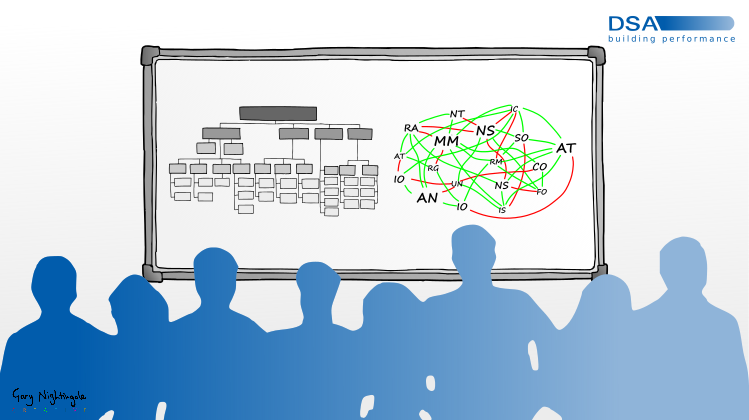
Many of the leaders and managers I coach grapple with effective communication – it seems to be a frequent topic of conversation.
So, here are some examples and lessons I’ve learnt that might be useful for your own communication with your colleagues:
Example 1: What response are you getting?
One day, back in the mid-nineties, I was offloading my frustration to my first coach. I spent all my time writing beautifully crafted memos (pre-email days) communicating important things to ‘my’ people and, in spite of my efforts, it wasn’t working. My coach asked me about the response I got from my memos. I replied, “Nothing, zilch, silence.”
She said, “Dave, your communication is the response you get” and left me with that.
Confused, I asked a few of my people about a recent memo I sent out. Frank, the general foreman, said, “Dave, I just chuck them straight in the bin, like most other people do.”
I got it. My communication is the response I get. No response, no communication. I was not communicating. Time to try something different.
Example 2: What do your people think of your communications?
About 20 years ago, I was coaching Brian, a company owner. He had set it up from scratch and employed over 100 people. He was annoyed about constant complaints from staff about the ‘lack of communication round here’.
He said, “Dave, I’ve got to crack this communication thing, but I don’t know what else to do.” Visibly frustrated, he continued, “I tell them everything I know, I don’t hold back, it’s all up there on the noticeboard and in our Board meetings. I explain everything and ask all the directors to tell their people and they tell me they do and I believe them. What else can I do?” And then, “Actually, I’m sick of this, I’m going to sack the next person who complains about lack of communication!”
“What do your people think?” I asked.
He shot back, “About what?”
“I don’t know … about the stuff you and your directors are telling them.”
Silence.
“Dave, I’m not listening to them am I? I’m telling them. Communication is two-way, talking and listening, isn’t it?”
He set up Friday lunchtime open comms sessions in the canteen where he mostly listened.
No one got sacked.
Example 3: Staff communications are not black and white
Steve, a company manager, said to me, “Today, I want to work out with my team why it’s so difficult to bring about change in our organisation.”
“How are you going to do that?” I asked.
He told me he had been thinking about it in the lead-up to this workshop and his plan was to explain the change and then show them the organogram which set out the corporate hierarchy and lines of communication.
“It should be simple, but never is, we always get bogged down. Exploring this will hopefully shed some light and open up new avenues.”
When they were in the thick of it, I asked, “Does your organogram explain the lines of communication in reality?”
Steve confirmed in front of the group, “Yes, that’s how it works here” and most seemed hesitant while a few nodded in agreement.
I invited an experiment: write the names of the people featured in the organogram randomly on the whiteboard (about 30 people) and connect those who frequently talk with each other using a green marker pen, and those who ‘should’ be talking with each other but don’t with a red marker pen.
After twenty minutes I invited comments on their whiteboarding, asking “What does this mean to you?”
One person said it was a mess of green and red lines and that nothing discernible could be drawn from it.
Another said it was great how mostly everyone was freely talking with everyone else.
Another agreed but wondered what they were talking about and if it was on mission and if so, who’s mission?
Steve said, “It’s clear that our actual communication is way more complex than the lines dictated in the organogram. I’ve been naive to think it ever worked as shown.” He continued, “Actually, I don’t think top-down change has ever worked here. Right, we need to learn from this and come at it differently. Let’s put our minds to that for the rest of the day.”
The difference between dialogue and debate
Debate is where you argue your point; your intention is to prove you are right and the other person wrong. In the UK House of Commons, for example, the Government and the Opposition hammer it out; there is no listening, they don’t attempt to answer questions, they have their own agendas and it appears the intent is to score points against the other. The one with the most votes wins the argument, seemingly irrespective of its merit. In organisations, the boss usually wins the argument.
Dialogue is different. Let’s say you and I are having a dialogue – I stay open to what you are saying even though I may not agree with it. And you stay open to what I am saying even though you might not agree. We each suspend our thinking, like clothes on a washing line, so we can stand back and look at it. Our intent is to understand each other’s perspective. We avoid a rush to judgement and fixed positions. If we can do that, we might learn something and move forward together.
To distinguish dialogue from debate, I have oversimplified, unwittingly portraying one as good, the other bad. In reality, both are needed, depending on the situation. You choose. Debate tends to be competitive; dialogue collaborative.
Often, we talk about working collaboratively while using the competitive form of exchange – it’s jarring and feels wrong.
Coaching is underpinned by dialogue. A coaching style of management is a good match for our desire to work collaboratively – it feels right, it’s congruent. (See useful resources below for how to adopt a coaching style of management.)
Going deeper than communication
There is a deeper way of relating to people at work than merely communicating and that is to engage them. To engage is to intensely involve. How do you intensely involve someone? Well, not by hitting them with 45 PowerPoint slides; that’s broadcasting to them, one-way traffic.
Asking questions of one another and deeply listening, giving them space to think, draws on coaching skills – that’s a good way to intensely involve someone. Make sure to consider their response and build on it, though avoid stacking questions, machine gun style – that’s interrogation and not at all engaging. Also delegating a deliverable in a deep and deliberate way is very engaging that wins back your time and frees you up to permanently operate at a higher level.
Links to useful resources:
Delegate for Results – course and book
Coach for Results – course and book
Leadership Team Coach Dave Stitt works with construction industry executives and project teams enabling them to deliver remarkable results in a remarkable way.
Dave is the creator of Coach for Results, an accessible online course teaching the basics of a coaching management style so managers can grow confidence, capability and enthusiasm in the people around them. Read more blogs from Dave:

+ 3 more
48 years experience in construction industry, last 24 as leadership team coach